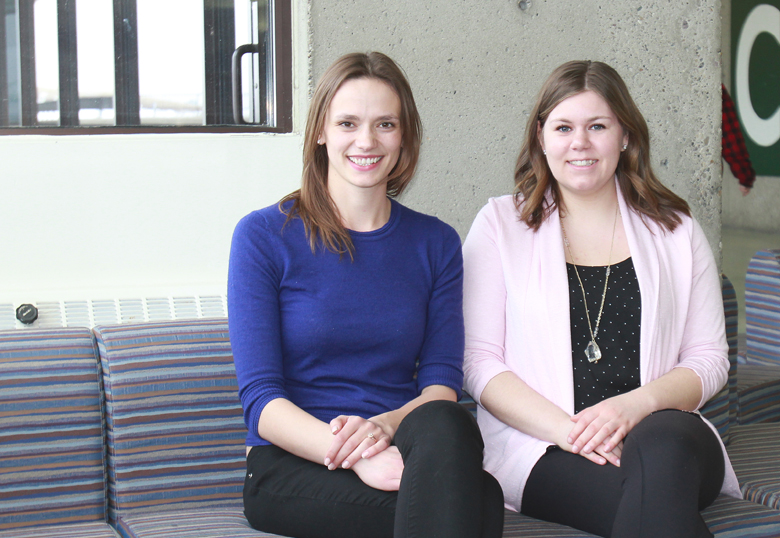For their part in illuminating aspects of Canadian history, Ashley Henrickson and Danica Renke, two University of Lethbridge master’s students, have won 2017 Government of Canada History Awards worth $2,000 each.

The awards honour the exceptional work of university students studying history, for the significance of their research in Canadian history, or education, for the originality of an activity for teaching Canadian history, and the work of high school students who have shown an interest in great moments in Canadian history. Henrickson and Renke are among 20 winners in the university category and a total of 192 students shared in $200,000 worth of prizes this year.
“The entire history department is delighted for Ashley and Danica — they are exceptional students, and these awards are prestigious recognition of their work,” says Chris Burton, Chair of the Department of History. “The awards are also a testament to the strength of the graduate program and the study of history at the University of Lethbridge.”
Renke, who’s in her first year of a Master of Arts program, examined the reasons why women became involved in the Canadian armed forces in the Second World War. Women found themselves provided with new and exciting opportunities through organizations like the Women’s Royal Canadian Naval Service, the Canadian Women’s Army Corps and the Canadian Women’s Auxiliary Air Force.
Renke, through her research, found that a major motivating factor for women to join the military service was having a deep and personal connection to someone already serving, such as a family member, spouse or friend. Those who felt such a connection wanted to “do their bit” to contribute to the war effort, help bring their loved ones home or justify the death of someone who had perished in the war.
Some women reported feeling a sense of patriotic duty to help out, especially if friends or loved ones were already serving. Others felt the need to “take up the torch” if they’d lost a family member or to “avenge” the death of a family member. One woman reported that her work in the service was a coping mechanism in that it provided her a distraction while she was grieving the loss of her husband.
Henrickson, also a Master of Arts student, examined the wartime emotions and experiences of Canadian children during the First World War. She looked at letters submitted to the Maple Leaf Club, a children’s correspondence club printed in Canada’s most popular national newspaper.
In their letters, children typically listed the number of relatives they had fighting overseas and described their own interests. While some historians have concluded children didn’t understand the horrors and dangers of war, social historians look at the larger context of the social rules of the time. Children would have been aware of the horrors of war from soldiers’ letters, newspaper articles, funerals in their communities and from soldiers who returned home with disfigured bodies and missing limbs. As they had been taught in school and church, children were expected to act and feel patriotic. Newspaper editors would have also been very careful not to print letters that endangered public morale or questioned Canada’s participation in the war.
The Great War was not hidden from children but was seen as an important teaching tool and a worthy cause for children to contribute to by knitting socks, raising money, saving food, working on farms or planting victory gardens. Today, the prevailing view is that children should be protected from war, illustrating the idea that the relationship between children and war is an ever-shifting social construct.
